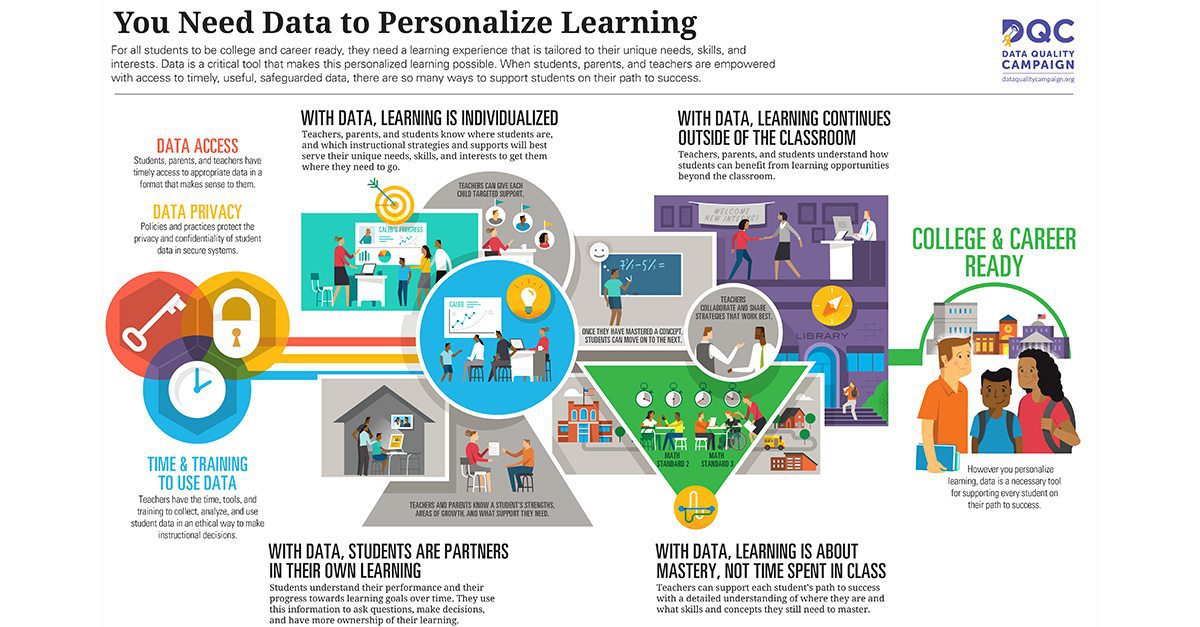You can’t turn the pages of Education Week, walk the halls of the average education conference, or browse your Twitter feed these days without encountering a vigorous debate about “personalized learning.” Who benefits? What is the role of technology? Which strategy is best and for whom? And finally, does it work?
While this debate rages, many schools and districts across the country are already implementing their visions of personalized learning. More than 3,100 district leaders have signed the Future Ready Pledge, committing to transition their districts to digital “while keeping personalized student learning at the center of all decision-making.” And personalized learning was the top digital priority of districts responding to the 2016–17 Digital School Districts Survey conducted by the Center for Digital Education and the National School Boards Association.
So what is personalized learning? While there are many ways it can look in practice, generally speaking it means shaping instruction to meet students’ individual needs. This is what good teachers have always done, but in recent years schools and districts have begun to design the learning experience around this idea as advances in technology and policy changes have made it more possible.
What does personalized learning mean to you? My guess is some variation of the following popped into your head:
- Learning is individualized.
- Students are empowered partners in their own learning.
- Learning is about mastery, not time spent in class.
- Learning continues outside of the classroom.
None of this is possible without ensuring that people have the data they need when they need it. Data provides a timely, robust picture of where students are, their strengths and where they need to grow, and their progress over time. Empowered with this shared understanding, there are many ways students, parents, and teachers can give students the individual supports and opportunities they need to succeed.
Data use is fundamental to any effort to personalize learning. As policymakers and education leaders develop a variety of strategies to personalize learning, they must understand that any attempt to meet individual student needs requires them to:
- Guarantee access to data: Teachers, parents, and students themselves have timely access to the data needed to understand the student’s individual needs, set learning goals, and see how the student is progressing toward those goals.
- Make data use possible: Teachers need training to know how to analyze, protect, and act on data as well as the time to analyze, plan, and collaborate with peers.
- Protect privacy of student information: This only works if privacy safeguards are in place and everyone using data knows their role in protecting it.
The Data Quality Campaign has released an infographic and animated video to illustrate that ensuring these conditions for data use are a critical part of empowering people to better deliver customized supports, resources, and opportunities along every student’s path to college and career success. Whatever your philosophy about personalized learning, educators and policymakers alike are working through these strategies right now and must ensure the effective, safe use of student data as they do.


